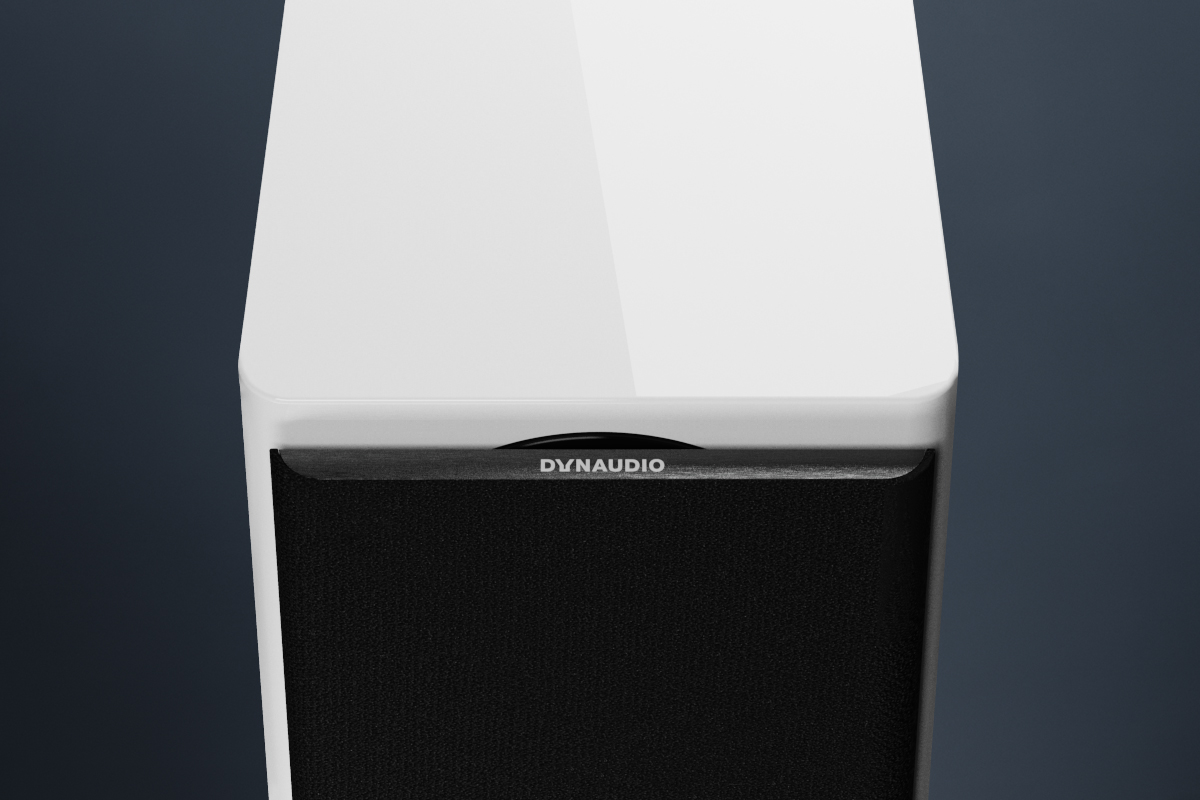 I’ve had a soft spot for Dynaudio for many years. For one thing, the Danish brand practically invented high-performance Simplifi’d hi-fi. When Dynaudio launched its Xeo range of active speakers in 2012, there were many excellent tabletop music systems on the market. But Dynaudio’s Xeo 3 standmount and Xeo 5 floorstanding speaker systems were different: they delivered real stereo from two discrete enclosures. Other than two-prong power inlets, the enclosures had no connectors of any kind. Instead, they received 16-bit/48kHz PCM audio from a companion wireless transmitter, which had mini-USB, optical (TosLink) S/PDIF, and line-level analog inputs (RCA and 3.5mm). The Xeo speaker systems made it possible to get serious stereo sound in multipurpose living spaces without cluttering them up with gear and cables.
I’ve had a soft spot for Dynaudio for many years. For one thing, the Danish brand practically invented high-performance Simplifi’d hi-fi. When Dynaudio launched its Xeo range of active speakers in 2012, there were many excellent tabletop music systems on the market. But Dynaudio’s Xeo 3 standmount and Xeo 5 floorstanding speaker systems were different: they delivered real stereo from two discrete enclosures. Other than two-prong power inlets, the enclosures had no connectors of any kind. Instead, they received 16-bit/48kHz PCM audio from a companion wireless transmitter, which had mini-USB, optical (TosLink) S/PDIF, and line-level analog inputs (RCA and 3.5mm). The Xeo speaker systems made it possible to get serious stereo sound in multipurpose living spaces without cluttering them up with gear and cables.
The Xeo 4, which succeeded the original Xeo 3 in 2014, was my introduction to Simplifi’d hi-fi. That little system is still pumping out tunes in the living room of our vacation condo in Southampton, Ontario.
I also have positive associations with Dynaudio’s premium Focus XD series of active wireless speakers, which were introduced in 2014 and refreshed in 2017. As I outlined in my kickoff feature for Simplifi, when my infinitely better half and I downsized our living quarters in 2018, I purchased a set of Focus 200 XD active standmounts so we could have clutter-free hi-fi in the living room of our new home.
I’d been expecting Dynaudio to announce an update to its Focus series for a while, and at last May’s High End show in Munich, Germany, that finally happened. The new lineup comprises the Focus 10 two-way active standmount ($5500/system, all prices in USD); the Focus 30 2.5-way, three-driver floorstander ($8250/system); and Focus 50 three-way, four-driver floorstander ($11,000/system).
The new lineup has a ton of new features. The old Focus XD series had analog and digital inputs on each speaker and offered wireless connectivity via the optional Dynaudio Connect transmitter. For the new Focus series, a network streamer is built into the primary speaker. The Connect transmitter used with the previous series had built-in Bluetooth and Wi-Fi, and support for Spotify Connect and UPnP/DLNA. The Focus series adds support for Apple AirPlay 2, Google Chromecast, and Tidal Connect; and it’s Roon Ready. The driver configuration of the three models remains the same, but the driver designs, amplifiers, and enclosures have all been upgraded, and the DSP engine has been retooled. And as Steve Jobs liked to say at the end of every product announcement, there’s one more thing: Dirac Live room correction can be added to all three models—a huge benefit for people like me whose music systems are set up in multipurpose living spaces, as opposed to dedicated listening rooms.
As soon as I heard about the new lineup, I fired off a request to Dynaudio North America for a sample of the Focus 30, which seemed to be just the right size for my living room. The speakers arrived in early October, and many hours of enjoyable listening ensued.
Inside and out
The new Focus speaker systems are available in Black High Gloss, White High Gloss, Blonde Wood, and Walnut Wood finishes. My review sample had the Black High Gloss finish. Fit and finish were impeccable, and I have no doubt that the same would be true of the other finishes. On the front of each speaker, below the grille, is an LED-illuminated Dynaudio logo that glows different colors to indicate network and speaker status.
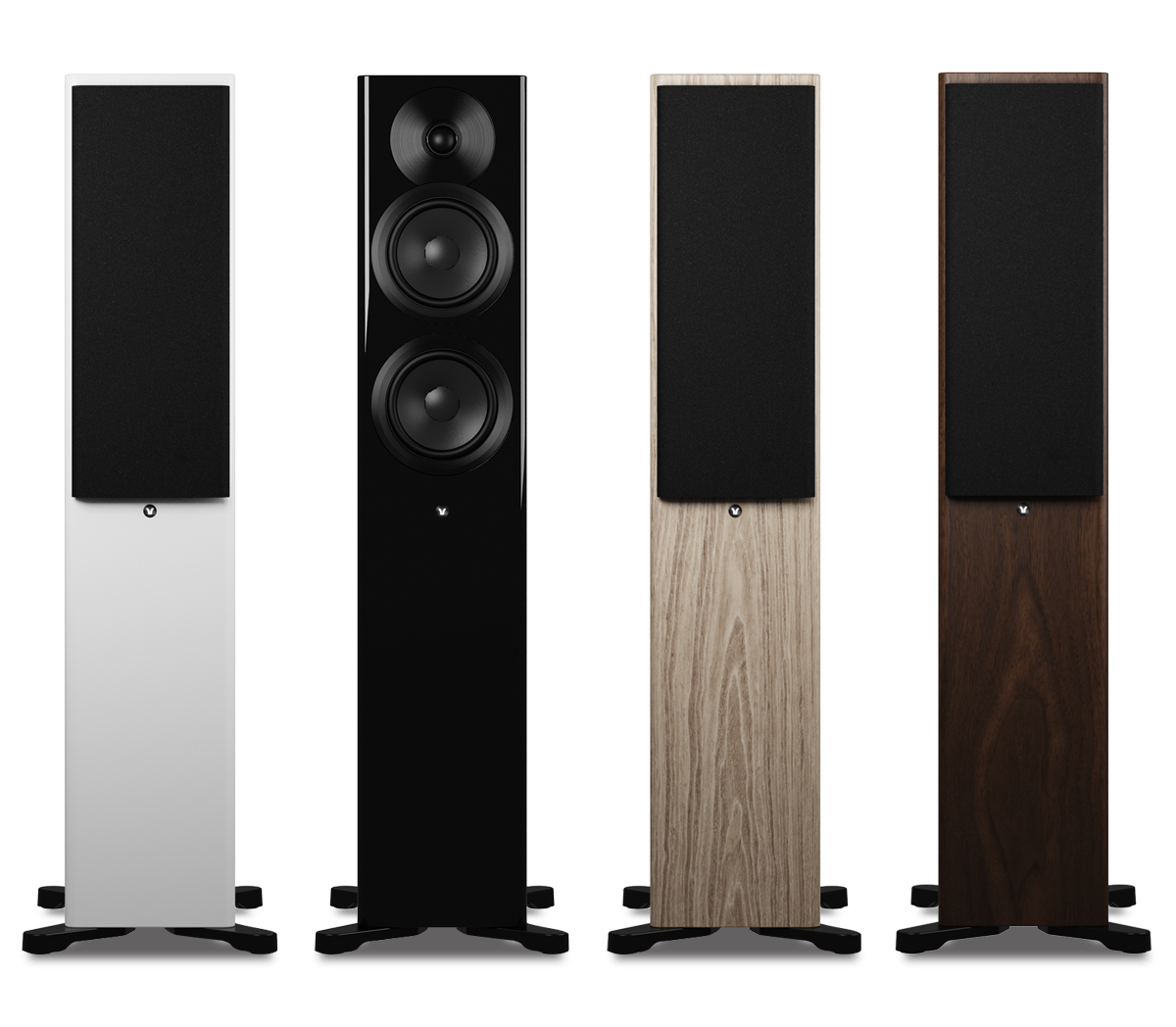
The speakers ship with magnetically attached black-cloth grilles, outrigger stabilizers with rubber feet, and floor spikes that can be added to the stabilizers if the speakers are being placed on carpets. With the outrigger stabilizers in place, the speakers themselves measure 7.1″W × 10.3″D × 36.3″H. The stabilizers have a footprint of 10.5″W × 13.5″D. Each speaker weighs 35.7 pounds.
The Focus 30 employs a 1.1″ soft-dome tweeter powered by a 110W class-D amp in each enclosure, along with two 5.5″ magnesium silicate polymer midrange-woofers, each with its own 280W class-D amplifier. Those amplifiers are sourced from Copenhagen-based Pascal A/S, which supplies amplifiers for Dynaudio’s flagship professional studio monitors, the Core series. Unlike its predecessor, the rear-ported Focus 30 XD, the Focus 30 has a sealed cabinet. Specified frequency response is 30Hz–22kHz, ±3dB, at 85dB SPL.
The top midrange-woofer hands off to the tweeter at 2.4kHz. The bottom midrange-woofer covers frequencies from 220Hz downward. In addition to implementing the active crossover, the Focus 30’s digital signal processor automatically adjusts EQ when the speaker grille is removed, and applies room-boundary and sound-balance adjustments made in the companion Dynaudio app.
The Focus 30 is sold as a stereo pair, consisting of a primary and a client speaker. The primary speaker has all the inputs and networking components, and can send 24/192 PCM audio to the client speaker over a coaxial S/PDIF (RCA) cable, or wirelessly at up to 24/96 resolution using WiSA (Wireless Speaker and Audio) technology.
The only connectors on the back of the client speaker are a three-prong IEC power inlet, a coaxial S/PDIF (RCA) input for receiving digital audio from the primary speaker when a wired connection is used, and a USB Type-B port for service. There’s also a button for pairing the speakers, and a master On/Off switch.
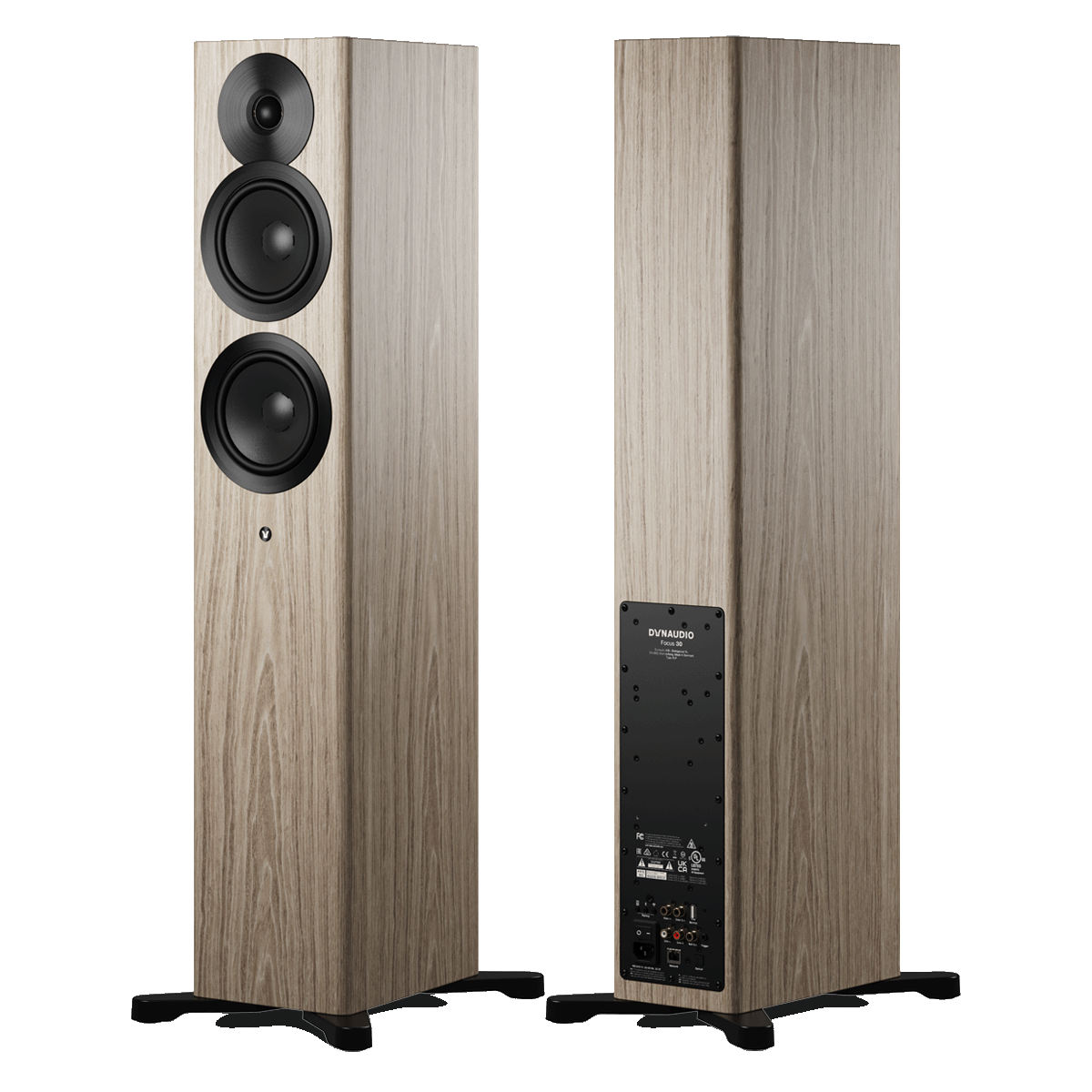
The rear panel of the primary speaker has WiSA, Bluetooth, and Wi-Fi pairing buttons at the top left. Next to them are coaxial S/PDIF input and output jacks (RCA) and a USB Type-B port for service. Below these are the master On/Off switch and IEC power inlet, line-level analog inputs (RCA), subwoofer output (RCA), 12V trigger (3.5mm), and on the very bottom, an ethernet port and optical S/PDIF input (TosLink).
The Focus 30 can receive digital audio wirelessly from WiSA-equipped source components. Some LG televisions have this feature; so does Primare’s SC15 streaming DAC-preamp. And as noted in the introduction, the Focus has ethernet, Wi-Fi, and Bluetooth connectivity, and a network streamer that supports Apple AirPlay 2, Google Chromecast, Roon, Spotify Connect, and Tidal Connect.
To add a subwoofer, you have to enable the subwoofer output in the Dynaudio app. When you do that, the DSP automatically implements an 80Hz high-pass filter for the main speakers so that they don’t have to reproduce deep bass.
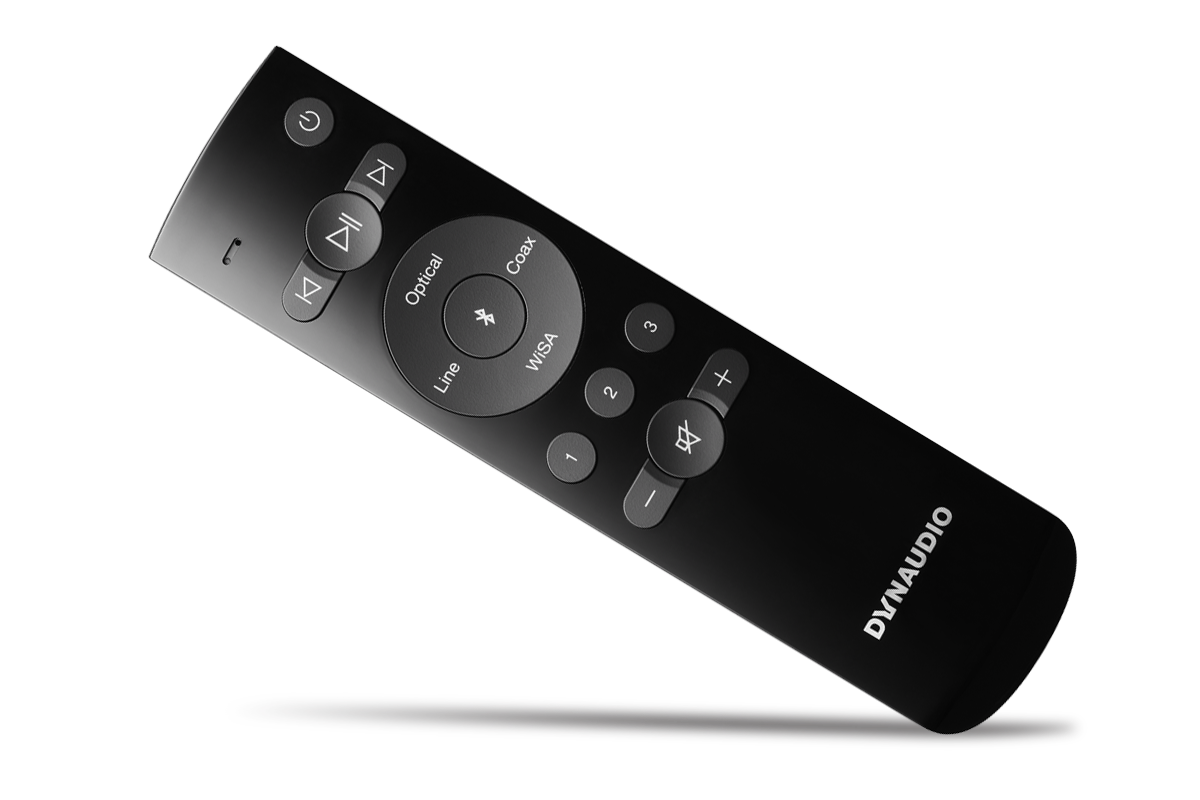
The supplied Bluetooth remote control has buttons for volume, muting, controlling playback, and selecting sources. There are also three buttons that provide instant access to favorite internet radio stations, which you set in the Dynaudio app.
Setup and software
Most users should be able to get up and running using the multilingual quick-start guide packaged with the speakers. But a full manual is available online, and it provides a lot of useful information for setup and day-to-day use.

The first time I powered up the Focus speakers, the primary and client speakers automatically established a WiSA connection, and a few moments later went into Wi-Fi connection mode, indicated by the LED indicator on the front baffle flashing white. Per the guide, I launched the Dynaudio app on my Google Pixel 4a smartphone. The app instructed me to go to my phone’s Wi-Fi Settings menu, select the Dynaudio hotspot network, and then return to the app. After I confirmed the name of my Wi-Fi network and entered my network password, I was connected. Easy-peasy.
The Focus 30 appeared in Roon as a Roon Ready device and on my iPhone 8 and MacBook Pro as an AirPlay 2 device. I could use the Roon app to play music through the Focus 30 system, and play audio from any app on my iPhone 8 and MacBook Pro. After I assigned the Focus 30 to a room in the Google Home app, I was able to send audio to the speakers from my Cast-enabled apps. And I could cue up music in the Spotify and Tidal apps, then transfer playback to the Focus 30. Smooth.
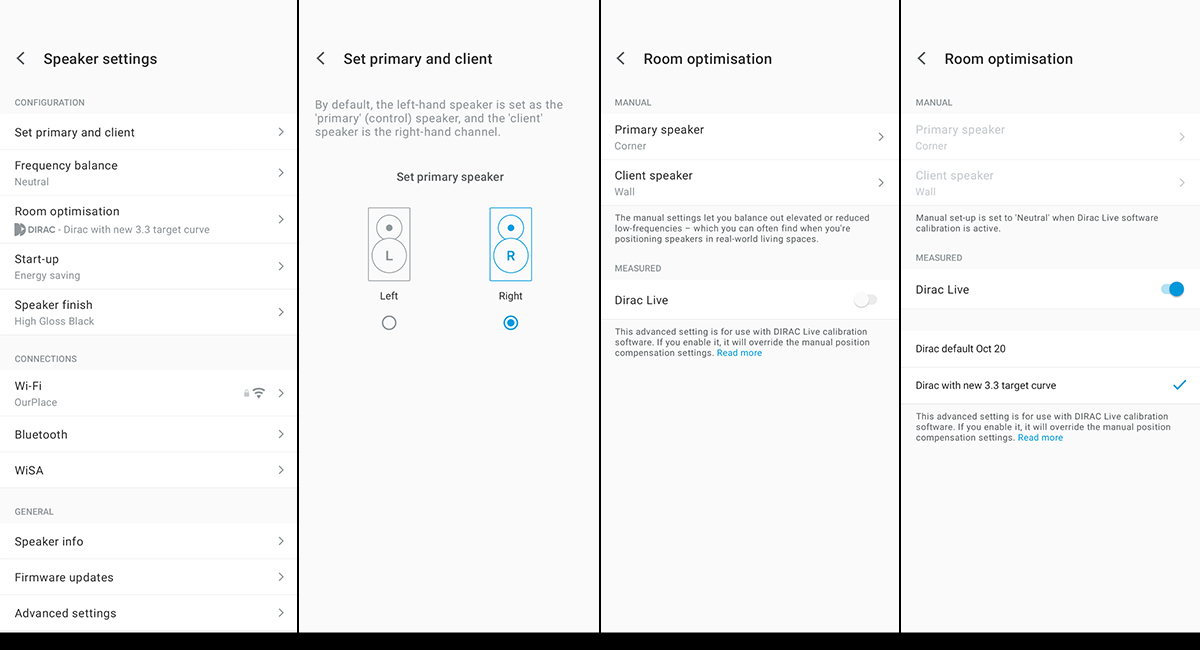
The Speaker Settings menu in the Dynaudio app has several useful functions. By default, the sample rate of the WiSA connection between the primary and client speakers is set to 48kHz to allow long-range transmission. I paired the speakers wirelessly and set the sample rate to 96kHz, and experienced no dropouts or hiccups during my listening.
By default, the left speaker serves as the primary speaker. You can change channel designation in the Dynaudio app’s Settings menu, which I did, as the small rack that holds my A/V components is next to the right speaker.
The Frequency Balance function in the Speaker Settings menu lets you adjust tonal balance to compensate for room acoustics. There are three options: Neutral (the default setting, which I used), Dark (for rooms with lots of hard surfaces), and Bright (for rooms with lots of absorptive materials).
The Room Optimisation function lets you alter bass output to suit speaker placement. There are three options: Neutral (the default setting, for situations in which the speakers are installed away from room boundaries), Wall, and Corner. There’s also a slider control for activating Dirac Live room correction. When you enable Dirac, the app’s Room Optimisation settings are overridden. You can store five different Dirac settings on the Focus 30.
To use Dirac Live, you need to download software and purchase a license from Dirac Research. A license for the limited-bandwidth version (up to 500Hz) costs $159; the full-bandwidth version costs $249.
You’ll also need a calibrated USB microphone, such as the MiniDSP UMIK-1 ($79) that Dirac recommends on its website.
Listening
Before shipping the Focus 30 system to me, Dynaudio North America burned it in for several days, so I could start listening critically straightaway. During my listening, I streamed music to the Focus 30 via AirPlay 2, Chromecast, Roon, and UPnP, and did not experience any dropouts or stuttering.
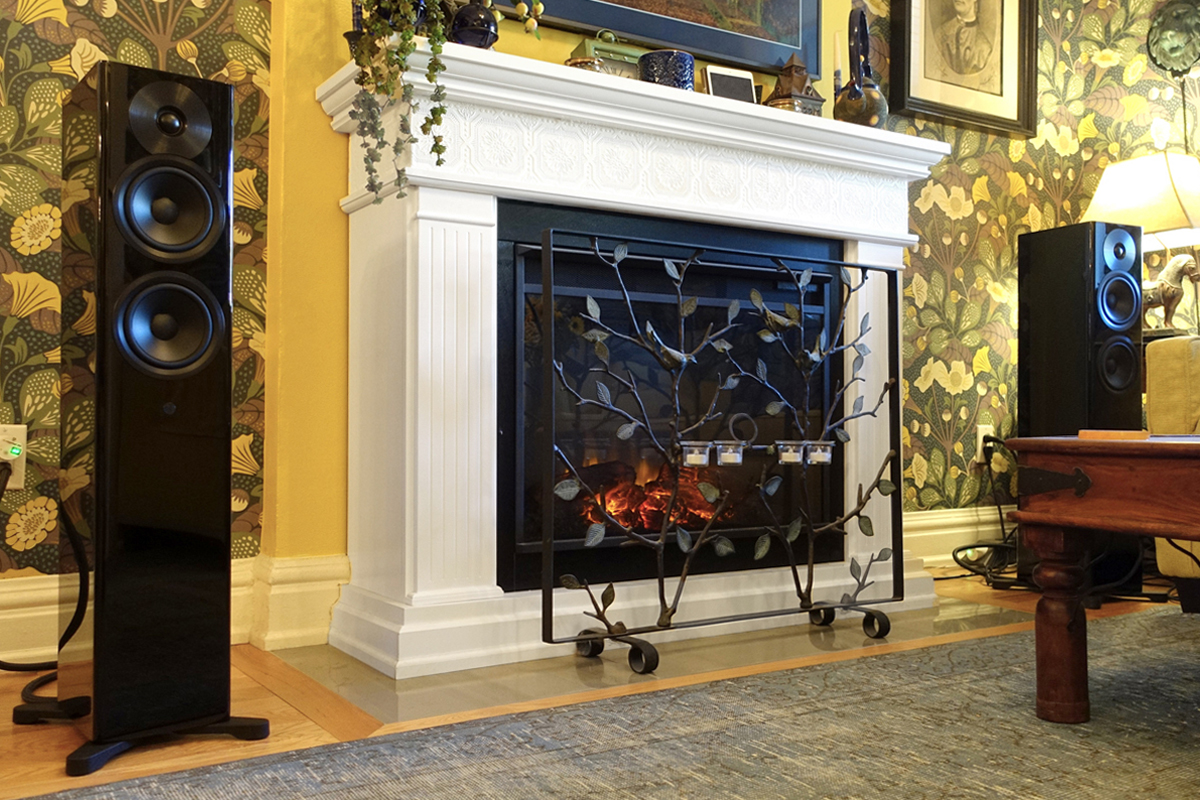
I placed the Focus 30 speakers on either side of the electric fireplace in the living room of our 1920s brick rowhouse, below portraits of my wife’s Danish ancestors. The speakers were 7′ apart and 7.5′ from my listening position on the end cushion of our sectional sofa on the opposite wall. In our room, the boundary conditions for the left and right speakers were quite different. The backs of both speakers were 16″ from an exterior wall. But the left speaker was near a large archway that opens to an adjoining dining room, and the right speaker was 30″ from another exterior wall to the right. The left speaker faced a doorway that opens into a hall, while the right speaker faced a lath-and-plaster interior wall. Given this asymmetrical layout, I appreciated the Dynaudio app’s ability to optimize the two speakers independently. After some experimentation, I chose the Corner option for the right channel and Wall for the left.
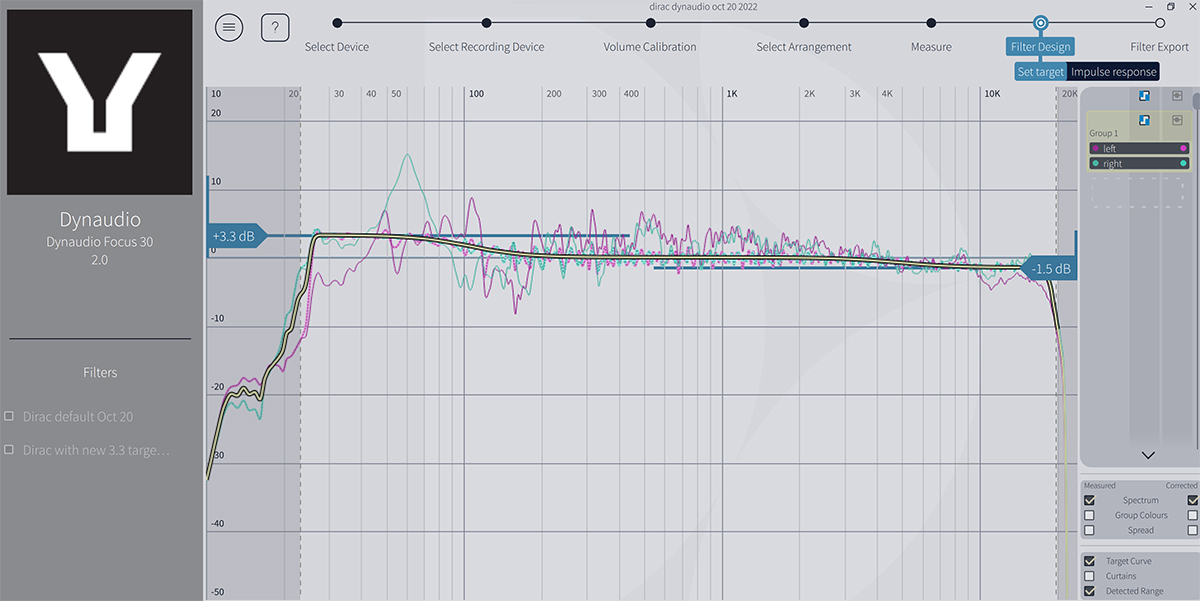
I also ran the full-bandwidth version of Dirac Live room correction. The latest version of Dirac automatically sets a target curve appropriate for the speakers. As you’ll see from the screengrab above, Dirac applied a 3.3dB low-frequency boost beginning at 200Hz, and a 1.5dB high-frequency cut at 4kHz. Both settings can be changed, but I elected to go with these defaults.
Whenever I’m reviewing speakers, I often like to start with a jazz-trio recording, partly because it’s a genre I enjoy, but mainly because the combination of piano, double bass, and drums tells me a lot about the product under test: bass definition, dynamics, timbral accuracy and consistency, soundstaging, and imaging. So when I sat down for some serious listening, I cued up “La Fiesta,” by Chick Corea, Christian McBride, and Brian Blade, from their live concert compilation Trilogy 2 (24-bit/192kHz FLAC, Concord Jazz / Qobuz).
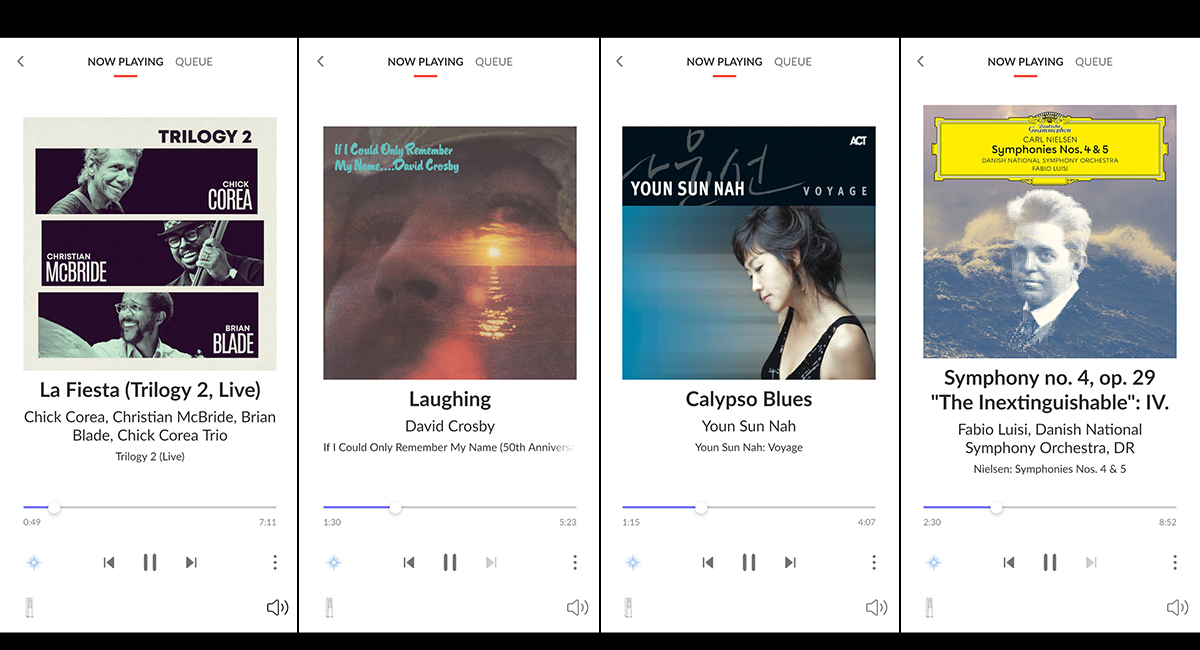
To begin, I restored Room Optimisation to its default Neutral setting in the Dynaudio app. The track starts with some piano improvisation by Corea while McBride plays a repeated low note on his double bass. Piano tone was close to perfect; I was really impressed by the heft and authority in the lower and middle octaves, and the sparkle up top. Dynamics were very natural, so that I could appreciate the varied pressure Corea was using for each note. But that double-bass riff, emerging from the right side of the soundstage, was thuddy and indistinct.
Thirty seconds in, the three musicians pick up the main melody and engage in lots of back-and-forth interplay. I continued to be wowed by the Dynaudio’s rendition of Corea’s piano in the front center of the soundstage. And Blade’s drum kit, arrayed across the rear, was just as impressive. Cymbals had just the right degree of metallic shimmer, and no splashiness. Rim shots were fast and powerful, and snare rolls were crisp and well defined. Beats on the floor tom had marvelous palpability, and while low notes on McBride’s double bass were still thuddy and indistinct, higher notes had better definition—though less than I’d have liked.
I played the same track again, this time with Room Optimisation for the left speaker set to Wall and the right speaker to Corner in the Dynaudio app. Everything I had admired about the Focus 30’s portrayal of Corea’s inspired pianism and Blade’s athletic drumming was still in place. But his floor-tom beats were crisper, and I could hear more detail in the double bass. Now I was aware of McBride plucking the strings, instead of hearing an indistinct boom. Even so, I would still have liked a little more texture.
Now it was time to try Dirac Live. From playing pink noise, I knew that switching in Dirac caused a 3dB cut in output, so I adjusted volume to compensate. By counteracting the nasty bass peaks in my living room, Dirac made a huge improvement to the sound of the Focus 30 speakers. Of course, the biggest difference was for McBride’s double bass. With Dirac engaged, I could clearly make out his plucks, and more easily follow his rapid-fire playing as he moved up and down the strings. Interestingly, his instrument now emerged from the rear left-center of the soundstage. Without Dirac, it had seemed to come from the right—almost certainly because the bass modes in my room are much more pronounced in the right channel. Now, Blade’s rolls on the floor tom were even more clearly defined. All of the aural images had greater three-dimensionality, and were more precisely located.
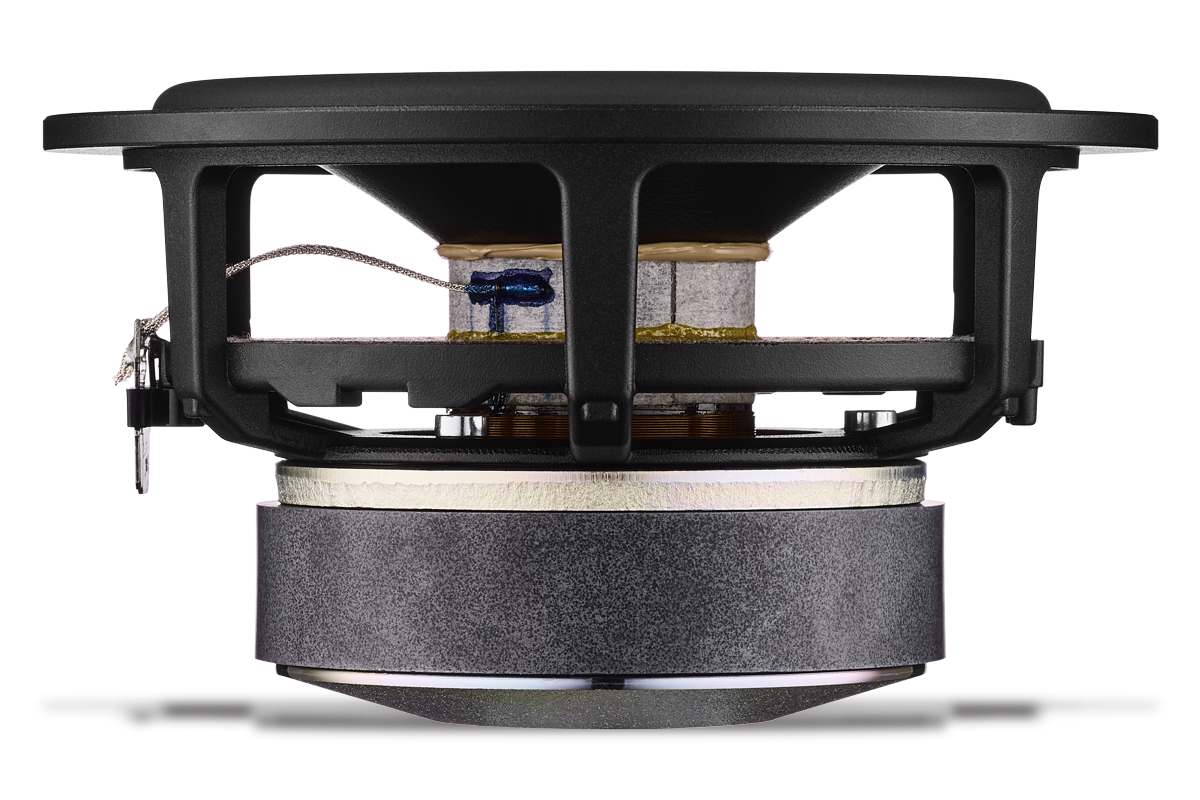
Next up was David Crosby’s “Laughing” from the remastered 2021 version of If I Could Only Remember My Name (24/96 FLAC, Rhino Atlantic / Qobuz). I started with Dirac disengaged, and Dynaudio’s Room Optimisation set to Wall for the left speaker and Corner for the right speaker.
The Focus 30 system created a deep, wide soundstage, with well-drawn aural images. Crosby’s gentle lead vocals and overdubbed harmonizing in the choruses was utterly natural. And the speakers nicely highlighted Joni Mitchell’s harmony in the final chorus. Emerging from the front of the soundstage at the far left and right, Crosby’s 12-string acoustic guitar and Graham Nash’s solid-body electric guitar had wonderful metallic jangle, but no edge; perfect for this late-hippie masterpiece. Jerry Garcia’s pedal-steel guitar, starting in the far left before swirling around the back of the soundstage later in the song, sounded ethereally mournful. But there was a boomy overlay on top of the hard-hitting transients of Phil Lesh’s Alembic bass guitar.
Dirac Live was transformative on this track. Now I could admire Lesh’s hard-hitting bass-guitar notes free of the murk added by my room. His attacks had an almost explosive character. There were benefits right through the audioband, and images were more focused. A slight nasal coloration affecting the presentation of Crosby’s singing (which I hadn’t noticed before) was gone; it was easier to separate voices in the harmonized choruses, and to pick out Mitchell’s contribution.
Youn Sun Nah’s rendition of Nat King Cole’s “Calypso Blues,” from her album Voyage (24/88.2 ALAC, ACT Music), is simplicity itself: the South Korean singer in the center, and to her right (the listener’s left), a double bass. That’s it. With Dirac disabled and Dynaudio’s Room Optimisation set as before, that double bass sounded wonderful, with good snap followed by rich woody resonance. And Nah’s voice was totally convincing through her entire range. When she soared during the choruses, or ramped up the volume to highlight a phrase, the Dynaudio system obliged, tracking her expressive singing ideally.
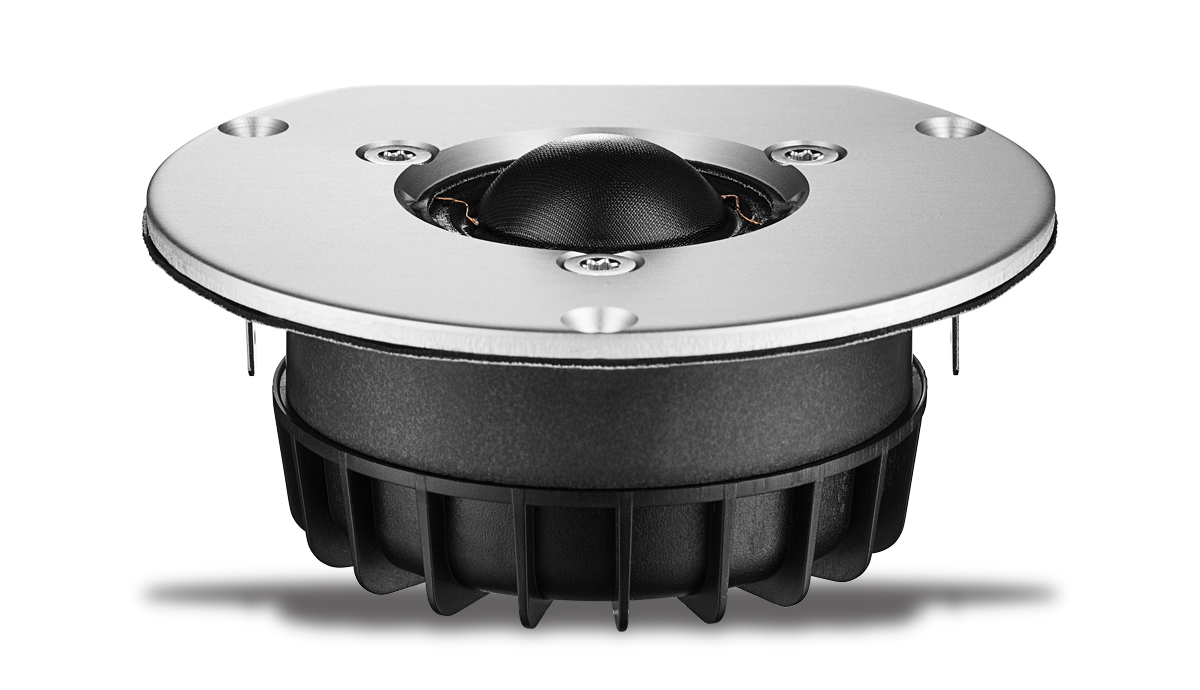
I thought it would be hard to improve on this performance, but Dirac made a noticeable improvement. The double bass had much more definition—plucks were sharper and better defined, and tone differentiation was significantly better. Switching Dirac off, the double bass sounded bloated; no big surprise, I guess. But I was surprised to hear that Nah’s singing sounded more focused when Dirac was engaged. A slight nasal coloration that I hadn’t noticed before disappeared. The aural images of both musicians were more three-dimensional and precise: I could have closed my eyes and imagined I was sipping a cocktail in a cozy bar, with the duo on a small stage a few feet from my table.
It seemed appropriate to play some Danish music through these Danish speakers, so I cued up a performance of the most famous orchestral work by Denmark’s best-known composer: Carl Nielsen’s Symphony No. 4, “The Inextinguishable,” with the Danish National Symphony Orchestra conducted by Fabio Luisi (24/96 FLAC, Deutsche Grammophon / Qobuz).
The fourth movement, Allegro, has a serene middle section bookended by furious passages that feature timpani at the far left and right waging a back-and-forth battle. The middle section sounded sublime as the woodwinds, and later the brass, contrapuntally toss a plaintive theme around while timpani roll ominously in the rear of the soundstage. The orchestral textures were beautifully transparent. The Focus 30 scaled up effortlessly during the intense sections, presented the Danish orchestra on a vast soundstage, with precise lateral imaging and front-to-back layering. But the dueling timpani at the rear of the soundstage sounded a bit thuddy, and the double basses on the front right sounded drony and indistinct.
Again, Dirac was transformative on this selection. The presentation opened up, so that the demanding passages sounded less dense and more transparent, making it easier to follow the interplay of different groups of instruments. The soundstage became deeper, with better front-to-back layering, and aural images were more precise and three-dimensional. Instead of an indistinct drone, the double basses now had growl and texture, and the cellos also had more detail. The sound of the timpani improved, too: during the famous duel, I was more aware of the mallets hitting the drumheads, and the resulting reverberations through the hall.
Comparisons
I bet there are plenty of readers who wonder how Dynaudio’s Focus 30 system compares with KEF’s LS60 Wireless active speakers ($6999/system). If you’re one of them, you’ve come to the right place.
For my comparison, I started with Dirac disabled on the Focus 30 system. Again, I engaged the Wall setting for the left speaker and the Corner setting for the right speaker in the Dynaudio app. In the KEF Connect app, I selected Wall Mode in the EQ Settings menu with a distance setting of approximately 40cm (16″).
Playing “La Fiesta” by the Chick Corea Trio, the KEF system created a soundstage that was deeper and higher than the one thrown by the Dynaudio. Placement of aural images was a little more precise. Blade’s rim shots and snare rolls were crisper and more dramatic, and floor tom strokes were a little deeper; cymbals were a tad less splashy through the Dynaudio. Corea’s piano had a little more sparkle up top through the Focus 30 system, but more heft down low through the LS60 system. On loud, upper-register chords, the Dynaudio system was a tad more strident than the KEF system. McBride’s double bass sounded fuller through the KEF LS60 setup, but a little better defined through the Focus 30 system. I think it’s quite likely that the Dynaudio’s DSP settings, separately adjustable for the left and right channels, were doing a better job of counteracting room problems than KEF’s EQ settings, which are applied equally to both channels. On this track, I preferred the KEF system by a slight margin, but the fact is both systems sounded glorious.
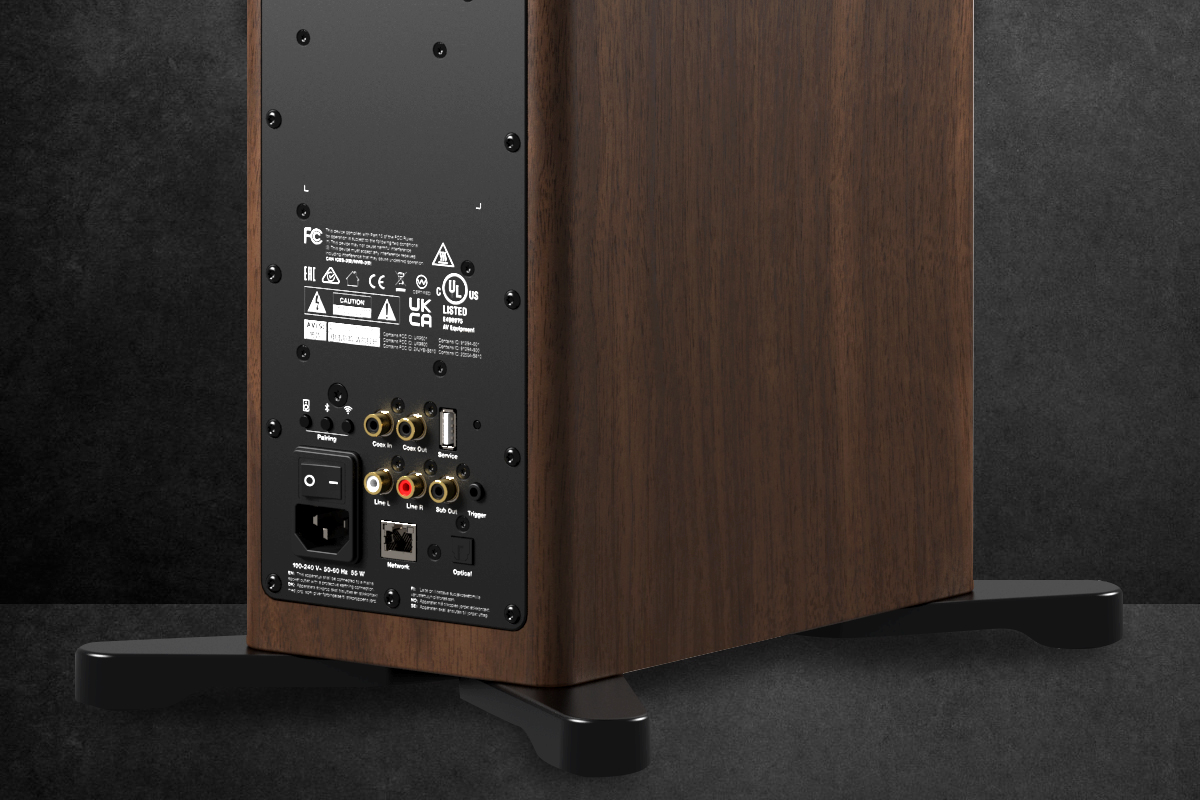
In the second round, I enabled Dirac Live on the Focus 30 system. On the LS60 Wireless system, I used Roon’s DSP engine to apply parametric EQ filters that I have previously determined to counteract the most serious problems in my room.
Piano tone seemed a little more natural through the Dynaudio speakers with Dirac engaged, compared to the KEF speakers with Roon’s EQ filters applied. Through the Focus 30 system, the piano appeared closer to the front of the soundstage than it did through the KEF system. While lower-octave passages had more weight and authority through the LS60 speakers, passages played in the middle octaves sounded a little fuller through the Focus 30 speakers, and those in the higher octaves had a little more sparkle, which I enjoyed. McBride’s double bass had more texture through the Dynaudio system, so that it was easier to follow his rapid-fire runs. Blade’s snare rolls and rim shots sounded more dynamic and exciting through the KEF system, but were better defined through the Focus 30 system. With Dirac engaged, the soundstage thrown by the Focus 30 speakers was wider and deeper than it was without Dirac, but the LS60 speakers’ soundstage was even wider and deeper. However, aural images were more precise through the Dynaudio system, and had more convincing three-dimensionality. Dirac tilted the balance in favor of the Dynaudio system. The KEF system had more body and slam, but the Dynaudio system was more transparent. Here I preferred the Dynaudio setup by a slight margin, but again this piece sounded glorious through both systems.
With the same settings—Dirac on the Focus 30, Roon’s EQ filters on the LS60—Crosby’s “Laughing” sounded more transparent through the Dynaudio system. The LS60 system was a little opaque by comparison. Even though I had matched levels, the KEF system sounded more substantial—it created a bigger sense of scale. The soundstage was wider and deeper with the KEF system, but more filled-in with the Dynaudio speakers. During the choruses, the Dynaudio speakers separated Crosby’s voice, singing the melody, more clearly from the background harmonies. And Crosby’s timbre was more natural through the Focus 30 system—there was a very slight nasal character through the LS60 system. The guitars had a little more jangle through the Dynaudio, which I liked. Lesh’s bass guitar had better definition through the Focus 30 with Dirac enabled, but it hit harder through the KEF. On this track, I preferred the Dynaudio system by a very small margin.
Here's the thing, though. I could use these EQ settings with the KEF LS60 Wireless when streaming from Roon, but not from other sources. And there was some trial and error involved in creating these filters. With the Focus 30, Dirac’s software did all that work for me. So a more realistic comparison might be the Focus 30 with Dirac enabled versus the LS60 Wireless with Wall mode enabled in the KEF Connect app.
Listening to “Laughing” this way, Lesh’s hard-hitting bass guitar sounded boomy and indistinct through the KEF system. This swamped the whole presentation, making everything sound more opaque. Of course, the boom wasn’t coming from the speakers, but from my room. But the Focus 30’s optional Dirac processing made it way easier to deal with the problem. Here, the KEF system had more scale, but the Dynaudio system was far more transparent.
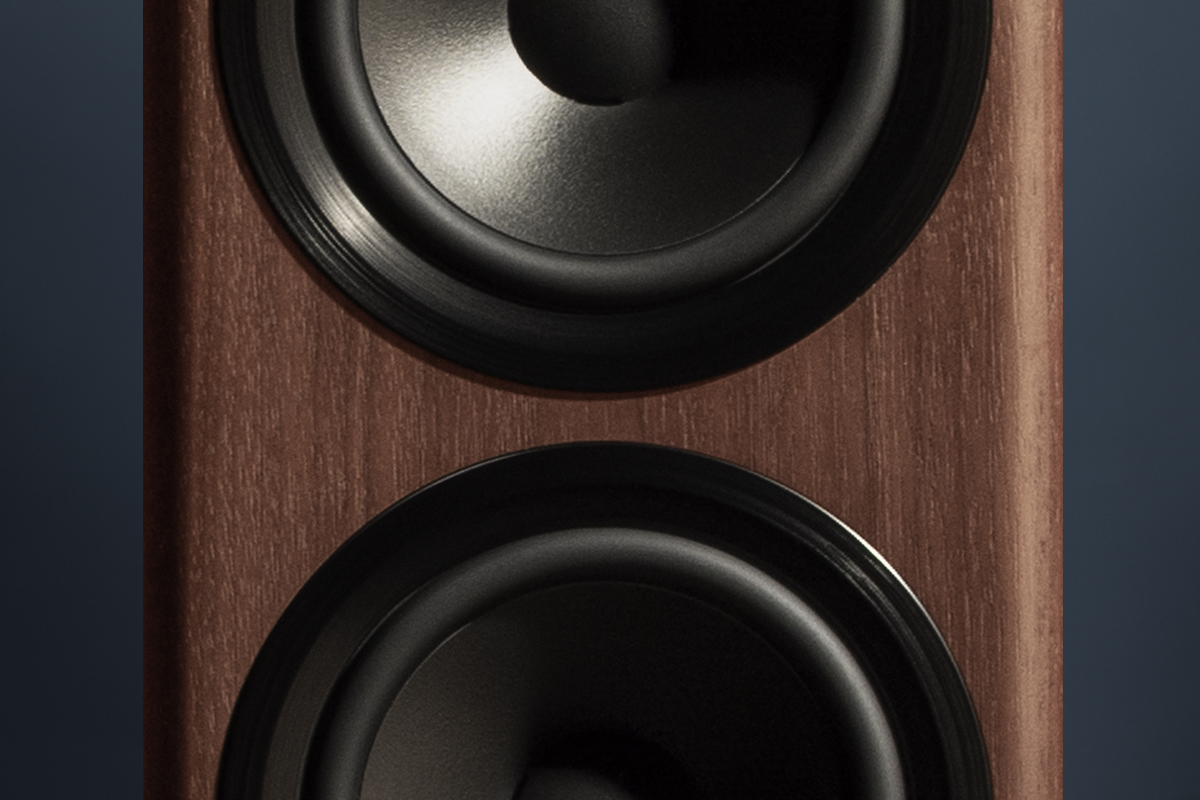
What about comparing the Focus 30 with a system that has Dirac Live? Glad to oblige. For this, I used Elac’s Navis ARF-51 active floorstanding speakers ($3999.96/pair), and NAD’s C 658 streaming DAC-preamp ($1999) running the full-bandwidth version of Dirac (this is a $99 upgrade—the C 658 includes a license for the limited-bandwidth version of Dirac). Before conducting this comparison, I did a fresh Dirac calibration of the NAD-Elac setup. Interestingly, Dirac applied a target curve with a greater bass boost: 4.8dB compared to 3.3dB for the Focus 30, and that doubtless affected this comparison. But I elected to use the automatic settings applied by Dirac, rather than experimenting with different target curves.
On Nielsen’s Symphony No. 4, the violins sounded a little breathier through the NAD-Elac setup—through the Dynaudio system they were a bit steely by comparison. But the double basses were dronier and less distinct through the NAD-Elac setup. The timpani sounded bigger and bolder through the NAD-Elac system, but also thuddier—they had greater palpability and texture through the Focus 30. The Dynaudio system created a deeper soundstage, with better front-to-back layering and image specificity. During the intense passages, the NAD-Elac setup sounded more powerful, but also more congested, so that it was harder to follow different orchestral lines; the presentation of the Focus 30 system was more transparent. I preferred the sound of the Dynaudio system on this selection.
Conclusion
By now, it should be clear that my time with the Focus 30 system has only deepened my admiration for Dynaudio’s active speakers. Throughout my listening, I was won over by the Focus 30’s transparent presentation, effortless dynamics, pinpoint imaging, and bass extension. And I loved the look of the speakers in my living room.
Dynaudio was an early pioneer in high-performance Simplifi’d hi-fi; but feature-wise, the previous Focus XD series had lost its edge. Now Dynaudio is back in the game. With support for AirPlay 2, Chromecast, Roon, Spotify Connect, Tidal Connect, and UPnP/DLNA, the new Focus lineup is well equipped for the streaming era.
For me, Dirac Live room correction is the clincher. Dirac is available on many integrated amps, A/V receivers, and streaming preamps, but not, to my knowledge, on any active speakers. Dynaudio’s new Focus series is the first to offer this feature. The Focus 30 is a fantastic system, but Dirac takes it to another level. For audiophiles whose music systems are installed in multipurpose rooms—and I think that’s most of us—Dirac is transformative.
More than most speaker brands, Dynaudio gets Simplifi’d hi-fi. This is a great system.
. . . Gordon Brockhouse
Associated Equipment
- Active loudspeakers: KEF LS60 Wireless, Elac Navis ARF-51.
- Streaming DAC-preamp: NAD C 658.
- Sources and control devices: Apple Mac Mini (M1 2020) running Roon Core 2.0; HP Spectre x360 running Audirvana 3.5.51, Roon 2.0, and Dirac Live 3.3.3; Apple MacBook Pro (early 2015); Apple iPhone 8 and Google Pixel 4a 5G smartphones.
- Network: Google Wifi four-node mesh network.
Dynaudio Focus 30 Active Loudspeaker System
Price: $8250 per system.
Warranty: Two years, parts and labor, on purchase; five years on electronics and eight years on drivers with registration.
Dynaudio A/S
Sverigesvej 15
8660 Skanderborg
Denmark
Phone: +45 8652-3411
Fax: +45 8652-3116
Website: www.dynaudio.com
North America:
Dynaudio North America
500 Lindberg Lane
Northbrook, IL 60062
Phone: (847) 730-3280
Fax: (847) 730-3207
Email:





